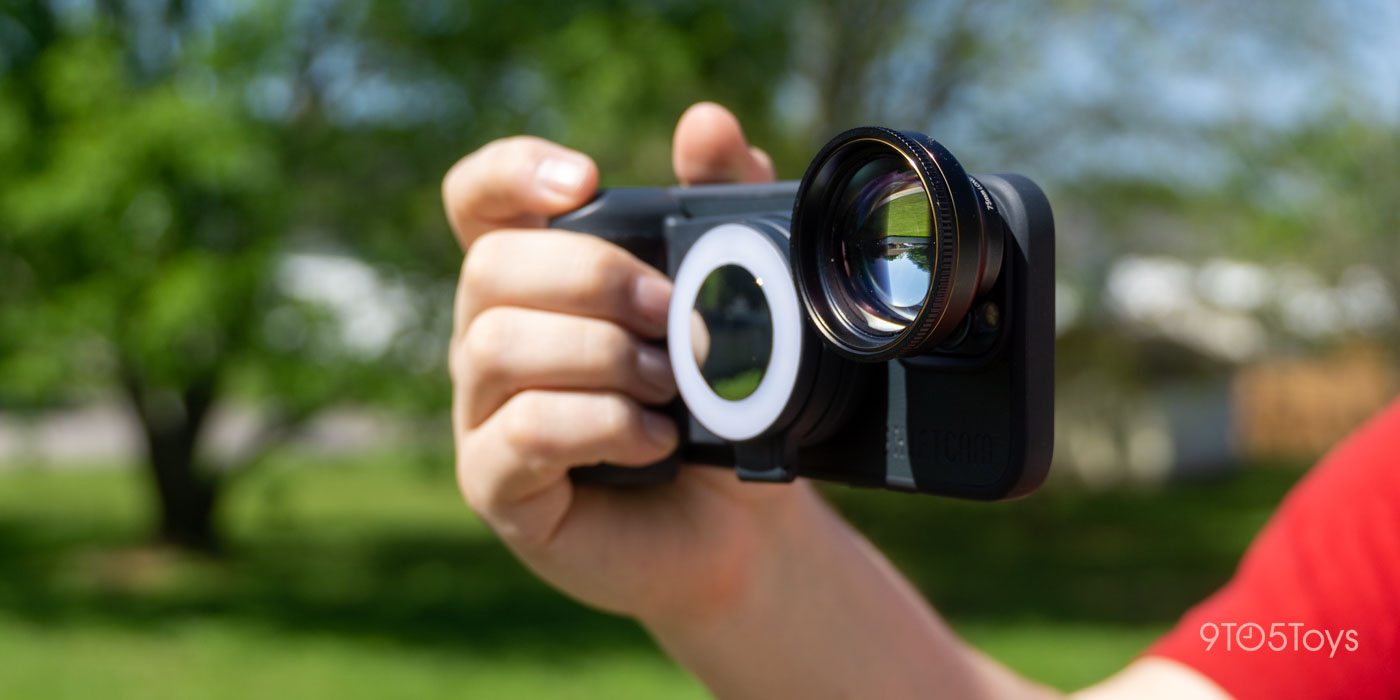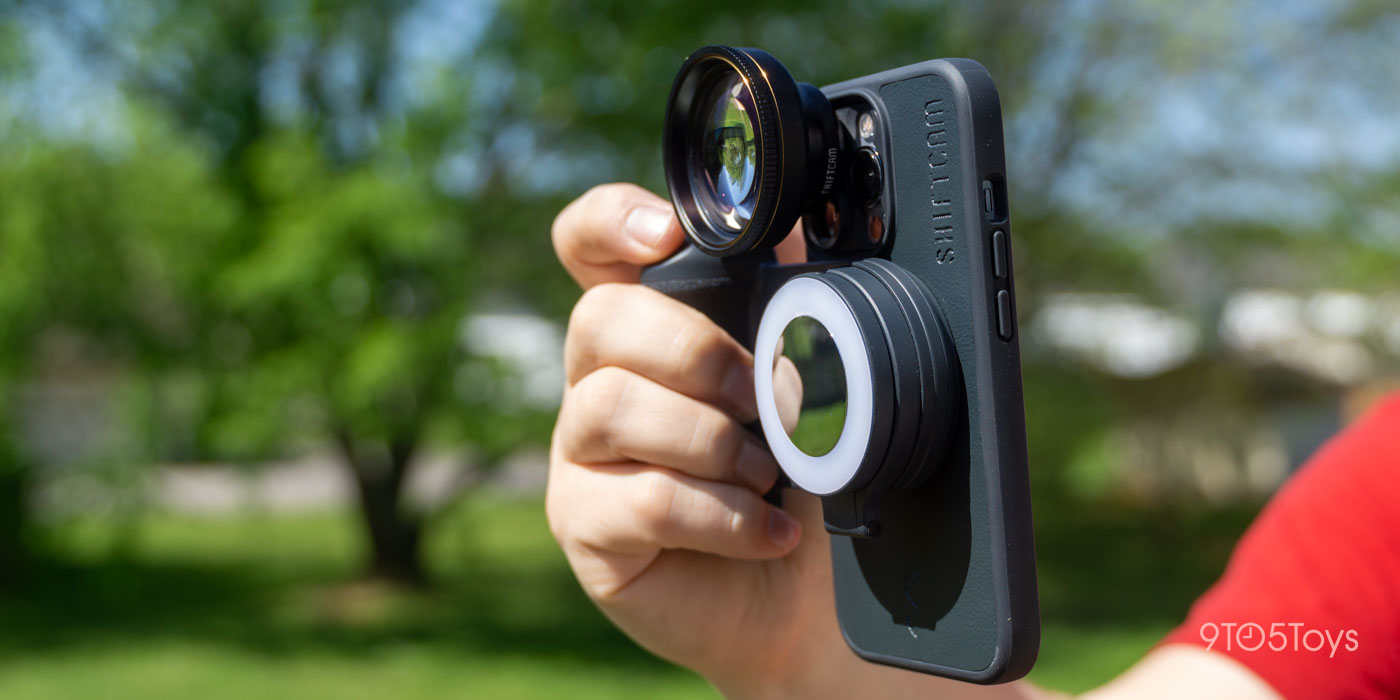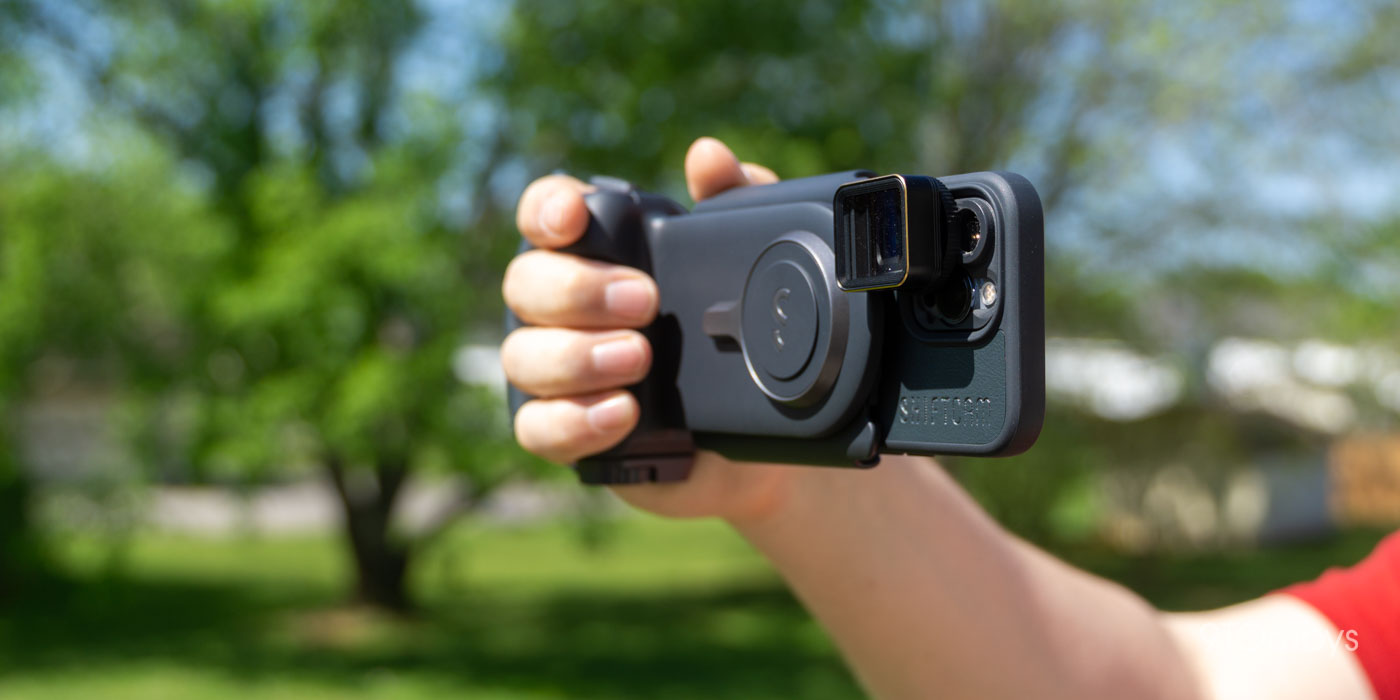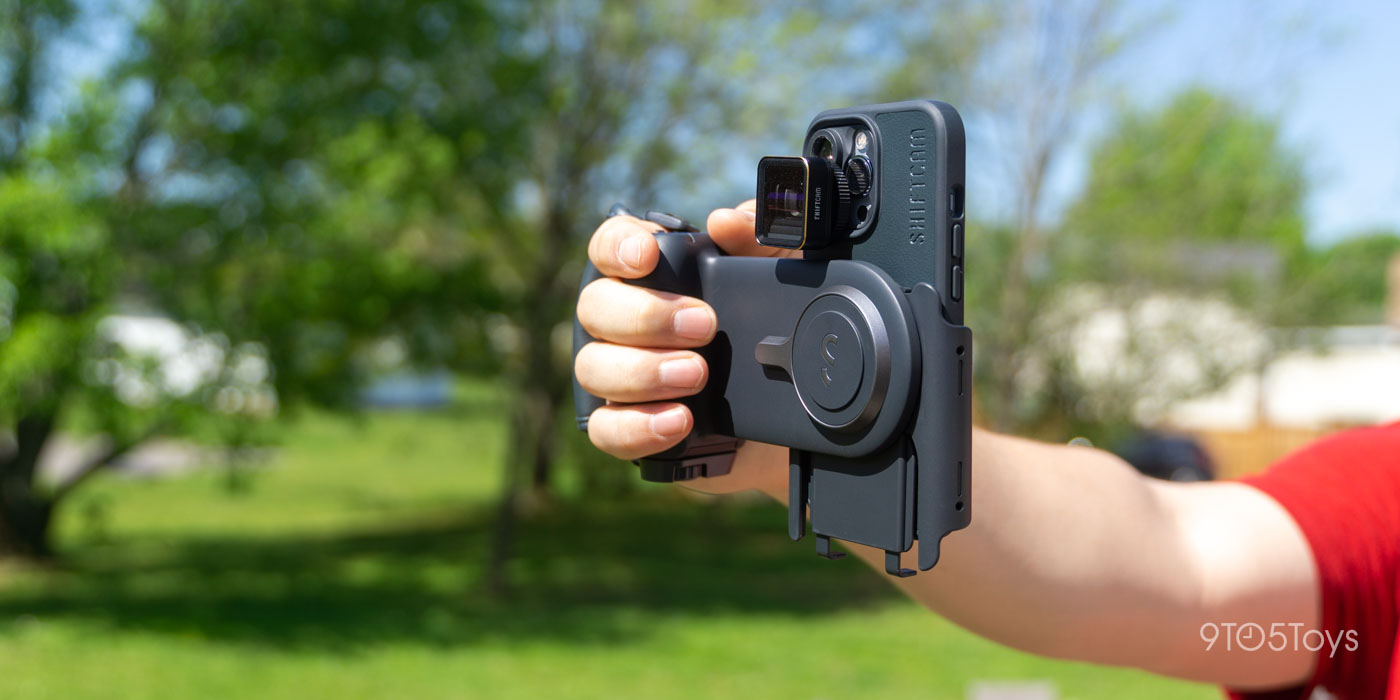
Today, ShiftCam, a slightly newer brand in the mobile videography/photography space, is introducing its LensUltra Series of smartphone lenses. Comprised of metal and high-quality glass, these lenses offer mobile photographers and videographers a wide range of options when it comes to capturing stunning imagery. We’ve spent the past few weeks with the LensUltra Series, as well as some other gear from ShiftCam, and our thoughts on the latest launch are down below in our hands-on review.
ShiftCam’s LensUltra Series review shows the best mobile lens kit I’ve used to date
Mobile photography and videography lenses aren’t new by any stretch of the imagination. In fact, there are entire companies based around the idea of taking your mobile photo/video game to the next level. But, ShiftCam is aiming to take market share away from the big dogs and deliver a better product in the process. Today, we’re going to be taking a look at the LensUltra Series of smartphone lenses from ShiftCam in a hands-on review.

This is a replacement for the ShiftCam ProLens lineup of lenses, where the company has “improved upon the previous iteration focusing on universality and clarity to bring you a new generation of mobile creativity.” The full kit consists of seven total lenses and two filters that are all compatible with a singular lens mounting system from ShiftCam.
I’ve used competing lenses many times before, and honestly, I was always a fan. But, the lens choice wasn’t always the most robust, and some of the lenses or mounting systems didn’t quite feel as premium as I would have liked. ShiftCam improves on that experience in every way.

Let’s start with the lens choices and why I love each lens in the kit. For starters, the 75mm long-range macro lens is just superb for capturing high-quality, crisp macro shots. Yes, the iPhone now has a macro photo mode, but it’s nothing like a real macro lens. The seven-lens kit does include a traditional 10x macro lens, but I’ve not been able to get quite as crisp shots from that as I can with the 75mm long-range macro. However, the 10x traditional macro does take things to the next level when it zooms in and is even crazier when you pair it with the iPhone’s telephoto lens (though that can be tricky to get things properly focused with). The 75mm long-range macro lens, however, is likely my favorite lens in our review of the ShiftCam LensUltra Series kit by far.

The reason it takes the top spot as my favorite lens is that it’s just so versatile. iPhones are great at capturing wide shots, Ultrawide shots, and even telephotos with enough light. However, one thing that iPhone (or most phones, for that matter) struggle with is ultra-close pictures. The 75mm long-range macro makes it easy for me to take up-close shots of products or items as needed without having to break out my DSLR and add macro tubes, which is always a pain. Plus, when you use a third-party camera app to force the 3x lens to be used on your iPhone, then using the 75mm long-range macro lens helps to take photos that used to never be possible with a smartphone.

Next up, we have the 60mm telephoto lens, which is designed to add some range to your shots. Again, the iPhone has a built-in telephoto lens, but it pales in comparison to the quality of the main lens of the device. While the 60mm macro doesn’t quite match the range of the 3x zoom available on iPhone 13 Pro and later, it still gives a bit of zoom that can help to take a photo further away with your main lens. From there, you can use digital zoom to go in further, though I don’t see much advantage here personally. I’ve used the 60mm telephoto a little, but typically if I want to zoom in, I just use my telephoto lens on my iPhone 13 Pro. However, this could be very useful for those who have an iPhone without a telephoto lens, as it does give some magnification natively instead of having to use digital zoom for everything.

Continuing on, we have the 16mm wide-angle lens. This is another one of those lenses that I typically won’t reach for but can see its place. Having an iPhone with a native Ultrawide lens, the 16mm wide angle doesn’t give me much benefit. However, one area that it does best the built-in Ultrawide lens is that there’s not quite as much edge distortion in some scenarios, which is a welcomed improvement over what Apple has built in. However, do keep in mind that the 16mm wide angle isn’t quite as wide as the built-in Ultrawide. (Say that five times fast.)

Last up in the traditional photography lenses is the 200° fisheye. Now, if you really want to capture a wide scene, that’s where the fisheye lens comes in. Of course, you’ll have a lot of distortion here, but isn’t that kinda the point? A 200° fisheye lens isn’t designed to give a standard field of view but instead takes in more than what your phone sees flat, ensuring nobody is missed in that group photo. I won’t reach for this lens super often personally, but when I need it, I’ll be very glad it’s in the kit.

Now, onto the last lenses in the kit, which are video-focused. There’s both a 1.33x and 1.55x anamorphic lens here, which will be key elements in any cinematographer’s arsenal. While you’ll need to use a third-party camera app to be able to properly view anamorphic desqueezed footage, there’s no replacement for proper anamorphic footage. You can add black bars in post all you want, but there’s just something about the unique lens flares that anamorphic lenses give, and you’ll have two different options for that here. I haven’t used these lenses much at all really, since I don’t shoot anamorphic and I’m not really set up/experienced with editing said footage. However, the build quality of the anamorphic lenses is fantastic, and the lens quality is just as good as the others in the kit.

Now, the best part of the entire LensUltra Series lineup, at least, in my opinion with this review: the circular polarizing filter and the variable ND filter. Both of these are included in the full kit, and you’ll find that they natively mount to each lens (outside of the 10x traditional macro, 200° fisheye, and anamorphic) as well as to the phone itself. That means you can use VND when recording footage using the native lens on your iPhone or with one of the lenses from ShiftCam. This is pretty stellar considering that just about every other lens manufacturer around for iPhone requires a separate mounting system to use a VND filter…or you have to thread it onto their proprietary lenses. The fact that the VND and CPL can be used without a secondary lens makes this a much better choice for those wanting to travel light and not bring lenses with them on certain shoots. But, the compatibility makes it even better when the need arises. As spring is just now starting to shine around here, I’ll be using the VND a lot for outdoor shots, I’m sure, and the CPL will come in handy whenever I need to get a polarization problem fixed for a photo with ease.

The ShiftCam LensUltra Series is available for backing on Kickstarter beginning today. Pricing on Kickstarter starts at $109, with shipping beginning in July. Depending on how many lenses or what lens you want, the pricing goes up from there to top out at $849, which includes all lenses mentioned in our review, a case, two VND filters, the ProGrip (which we talk about below), a shotgun microphone, light panel, and more as the “Deluxe Full Kit” which is being offered at 51% below the planned MSRP of $1,719.85.
gadgetnewsonline’ Take
This kit is expansive. Like, really expansive. Moment, the biggest company out there for mobile lenses, only offers a 1.33x anamorphic, whereas ShiftCam has that and a 1.55x as well. Similarly, Moment’s fisheye is only 170°, while ShiftCam delivers a 200° field of view. Moment also offers a 10x macro, whereas ShiftCam has both the 10x and the 75mm long-range.

Where am I getting at with this comparison? Well, simply that ShiftCam is going to become my go-to recommendation for mobile lenses, hands down. The build quality is superb, the lens selection is fantastic, and the quality is out of this world. I know it sounds like I have nothing bad to say, but that’s because I really can’t find anything. If I had to come up with one thing, it would be that I wish ShiftCam had its own app for iPhone, but other than that there’s really nothing left to complain about.
I wish I were more of a case person on my phone because I would keep the ShiftCam case on it at all times so I’d always be ready to attach a lens at a moment’s notice. However, since I’m not, I’ll just keep it close by, so whenever I need to take an ultra-macro shot or 200° fisheye, it won’t be hard at all. Really, these lenses are probably my favorite mobile accessory in quite some time outside of MagSafe itself. But, ShiftCam even uses that with its SnapGrip Creator Kit.

As part of our press kit, ShiftCam also sent out several other accessories for us to check out. These are all items that the company has had out for quite some time, but we felt it worth mentioning them here to give you a full view as to what ShiftCam has to offer.


The SnapGrip Creator Kit is what we’ll start out with here. This all-in-one kit is perfect for the on-the-go videographer or photographer. It’s the one I’ll likely reach for most, thanks to the fact that it uses Apple’s MagSafe tech to attach, which makes it easy to snap my iPhone 13 Pro to and take it off without having to deal with clamps. The tripod leaves a little to be desired here, as it’s made of plastic, through and through. Normally, that’s not a bad thing, but the retention ring for the ball mount is also plastic, and I felt like it could break if you screwed it down too tight. But the rest of the kit is solid. The SnapGrip itself attaches to your iPhone with MagSafe and gives you a portable wireless battery to power your device, as well as a dedicated shutter button to capture the moment. There’s also a snap-on LED light that you can attach, either to the SnapGrip, a tripod, or just your phone, which can be used facing backward or flipped around for selfies if the need arises.


Then, we have the ProGrip Starter Kit. This system uses a more traditional clamp to grab your phone, unlike the SnapGrip. However, it still packs a built-in wireless charging battery to deliver power to your phone while on the go. It has multiple 1/4-20 threads on it for attaching accessories or a tripod, and you can quickly flip it between vertical and horizontal recording modes. There’s the same dedicated shutter button here as well, making your phone feel more like a professional camera when out and about.

Both the SnapGrip and ProGrip are compatible with all of the ShiftCam lenses when used with the ShiftCam case as well, giving you an all-inclusive mobile photo and video setup.






Back the ShiftCam LensUltra Series on Kickstarter today
FTC: We use income earning auto affiliate links. More.






Comments